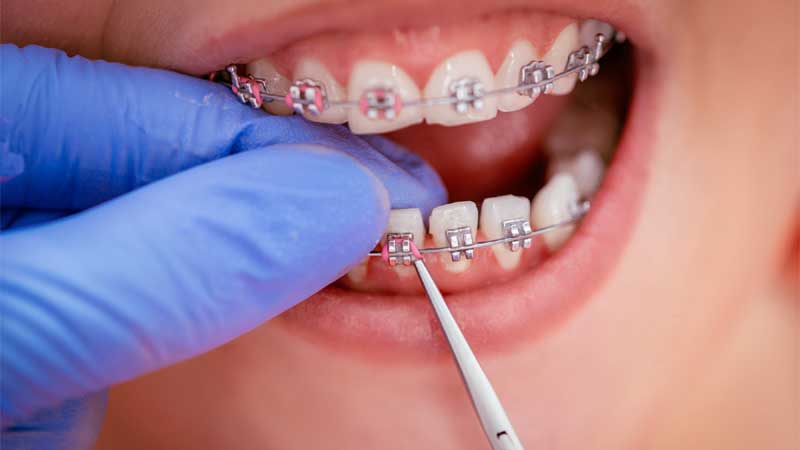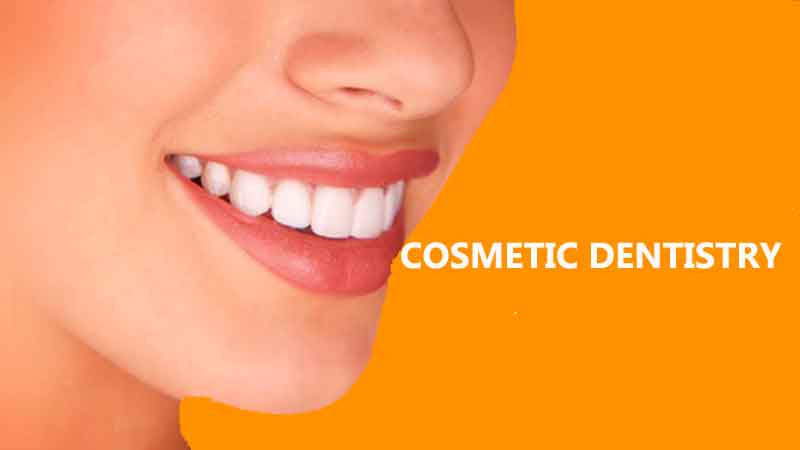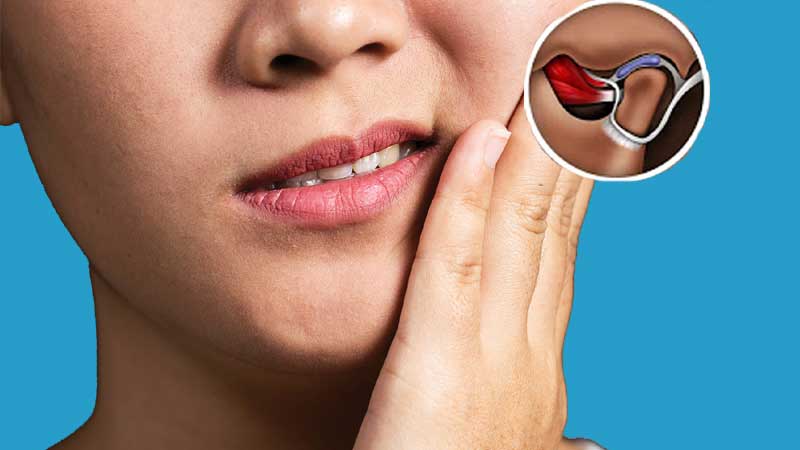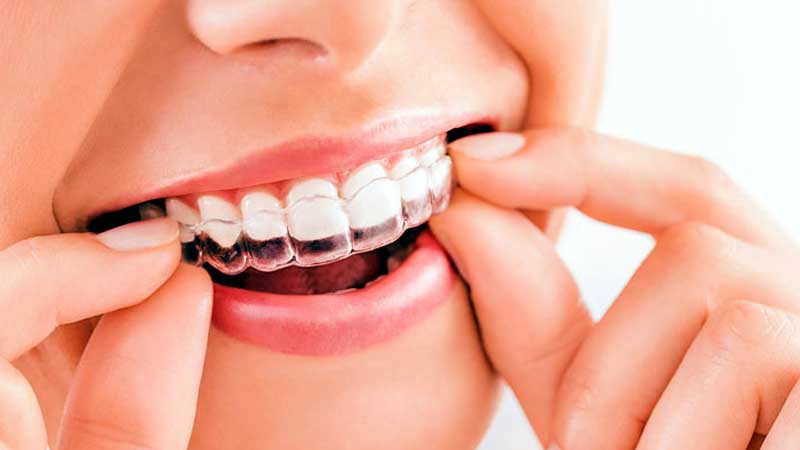
An overbite is a type of malocclusion or bad bite in which the upper teeth extend over the lower teeth when you close your mouth. Overbites can be vertical which means the upper teeth noticeably overlap the bottom teeth or horizontal which means the top teeth protrude past the bottom teeth. The overlapping happens over a degree of about 1 or 2 millimeters and the severe overlapping, also known as vertical overbite can happen about 4 to 10 millimeters deep.
Overbites are classified into 3 classes according to the severity of the malocclusion. Class 1 or neutroocclusion is the most common type of overbite and it happens when the upper teeth slightly overlap the bottom teeth but the bite is otherwise normal. Class 2 or dust occlusion happens when the upper teeth and jaw severely overlap the lower teeth. This causes the front teeth to protrude (buck teeth) and the back teeth may be positioned over the lower jaw’s center teeth. Class 3 or mesiocclusion happens when the lower front teeth protrude more than the upper teeth (underbite). This can happen when your lower jaw is larger than your upper jaw or the upper jaw is too short.
Overbites are usually caused by repetitive behavior that forces the teeth out of a normal alignment. In most cases, an overbite develops in early childhood as a result of habits like thumb-sucking, overuse of a baby bottle, etc.
An overbite isn't simply a cosmetic problem. An improper bite can interfere with your ability to chew and speak properly, as well as cause abnormal wear to the enamel of your teeth. If your teeth are protruding and/or your upper and lower teeth don’t come together comfortably (called malocclusion, or a bad bite), jaw problems also may arise and sometimes leads to complicated TMJ disorder. If you feel you have jaw ache, please make an appointment with Smile Center. Our Orthodontic treatment will straighten your teeth or move them into a better position. This not only improves their appearance and the way the teeth bite together but can also make them easier to clean.
Overbite Correction Methods
There are three primary methods of correcting an overbite: Orthognathic surgery, teeth extraction, and orthodontic treatment. Overbites can often be corrected without orthognathic surgery by braces and aligners. While aligners and braces work in a similar way to shift teeth into the correct alignment, braces require more intensive treatment but they produce more significant results, Clear aligners or "invisible braces are suitably used for minor corrections. If you're considering clear aligners versus fixed braces, ask us about the cost and the pros and cons for your specific needs.
Dental Braces
Dental braces are a type of orthodontic treatment used to correct teeth that are crowded, crooked, protruding, out of alignment, or have irregular spacing. By moving the teeth into the ideal position, braces help create a more attractive and healthy smile for both children and adults. An important benefit of braces is they can serve as overbite and underbite correction while straightening your teeth.
Braces move your teeth by exerting constant pressure on them for extended periods of time. The shape of your jaw gradually adapts to conform to this pressure. Braces work slowly and treatments vary for everyone.
Braces are made of metal or ceramic, wires, and bonding material that attaches them to your teeth. Classic braces that come to mind for most people are made of metal brackets that are glued individually to each of your teeth. An archwire puts pressure on your teeth and jawline, and elastic O-rings connect the archwire to the brackets. Patients now can choose different bracket shapes and different color elastics. The type of braces that your orthodontist recommends will depend on several factors, such as your age and whether you have an overbite in addition to having crooked teeth. Braces are custom-made and individual to the needs of each person.
Success rates of braces vary depending on your age when treatment begins and what your treatment goals are. The best time to have braces is generally during childhood (between the ages of eight and 14 ), but there is no limit on the age of treatment because the process for moving teeth is basically the same at any age. The treatment for adults may take longer since adult facial bones are no longer growing, and certain corrections may not be possible utilizing braces alone. Depending on the specific type and severity of your alignment or malocclusion problem, tooth extraction or maxillofacial surgery may be required.
Overbite correction Procedure by Braces
Braces are used in a two-stage treatment. In the first stage, metal brackets are attached to your teeth and connected with a wire that aligns and straightens the teeth. The overbite is corrected once the teeth are straight. Stage two of treatment involves adding coils, springs, and elastic bands to the braces to shift your jawline over time. Depending on the health of the teeth, gums, and supporting bone, the amount of room inside your mouth, the distance your teeth must travel, the severity of your overbite, you may need to wear braces for 6 to 24 months.
You shouldn’t feel any pain when you’re having braces installed. But in the days following initial placement and during and after adjustments, they can feel uncomfortable and feels like a dull soreness or throbbing. In such cases, you can take an over-the-counter pain reliever.
Post Care for Dental Braces
It’s important to be extra mindful about your oral care when you have braces because your teeth with braces are more inclined to trap foods that can cause tooth decay., you need to be more careful about what you eat. Avoid sticky, hard food and cut down on how much acidic, sugary food and drink you have and how often you have them.
Clean your teeth carefully every day, including between your teeth where you can. Special floss from the orthodontist will make it possible to floss around the braces twice per day. A Waterpik flosser or an interdental toothbrush can be used to clean underneath and around archwires and brackets. Braces are delicate and you need to make sure you clean them carefully so that they do not break.
To get the best results possible, you will need regular appointments with us. We will check your brace and teeth, and make adjustments to the brace if they need to, braces usually need adjusting every 6 to 8 weeks.
Take Care of Your Teeth After Braces
Even though braces may have successfully straightened your teeth, they aren’t completely settled in their new position until the bones, gums, and muscles adapt to the change. For this time frame, you need to wear a ‘retainer’ regularly for the first 6 months. After that, you have to wear it only while you’re asleep, but you may do it for many years, this will vary from person to person.
Cost of Overbite Correction by Dental Braces
The price varies depending on the type of braces, but you can expect traditional metal braces to cost between Rs. 20000 to 40000. Some insurance carriers provide partial coverage for orthodontic treatment, so check to see what your policy covers.
Smile Centre India offers all types of aligners & braces for teeth like metal braces, ceramic braces & clear aligners. Book an appointment with us for your overbite correction guidelines.


